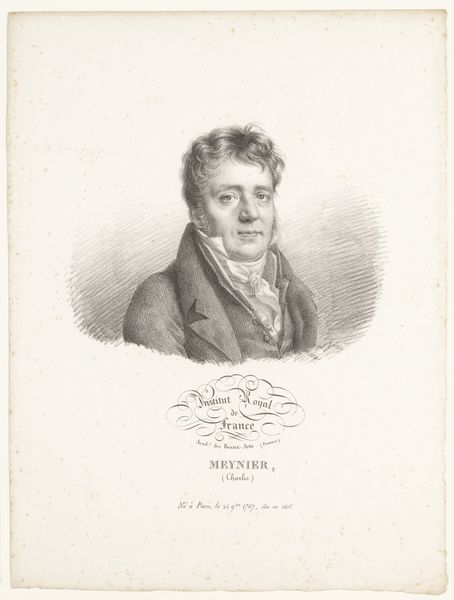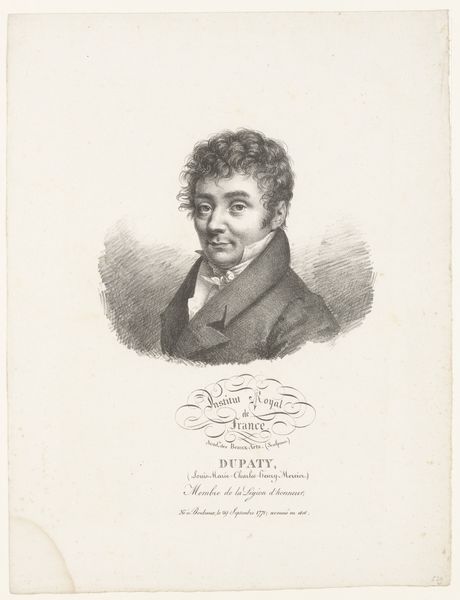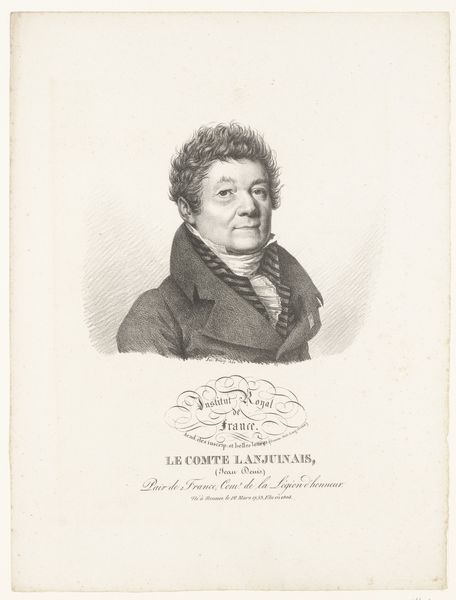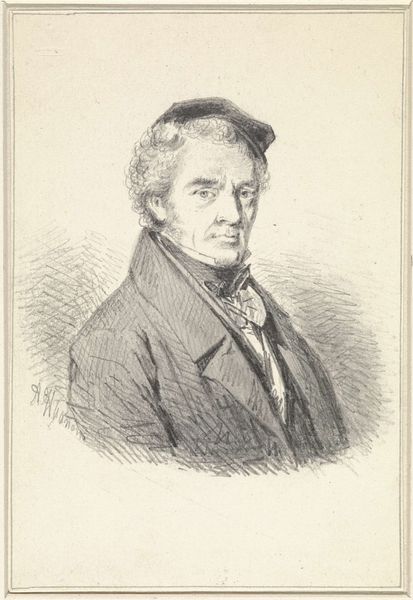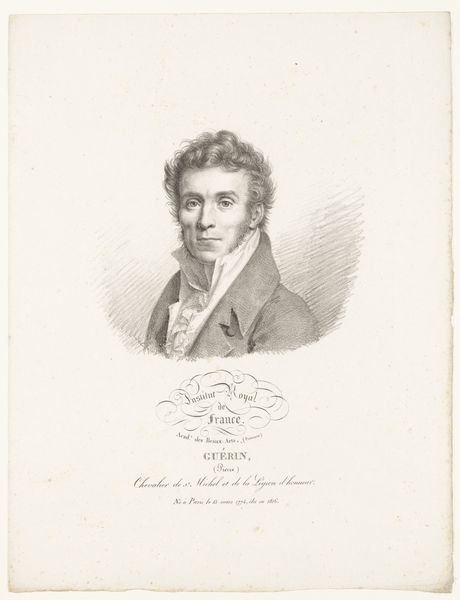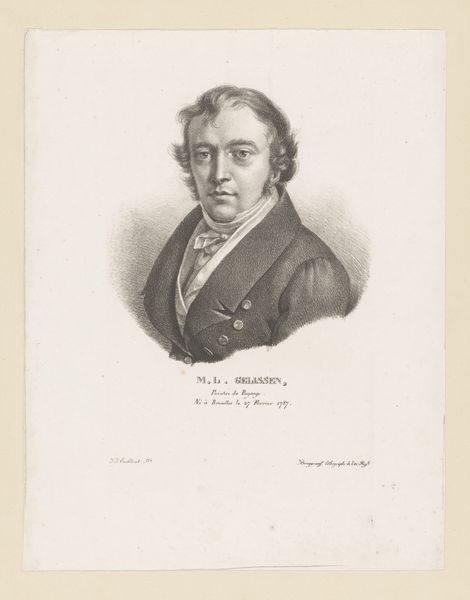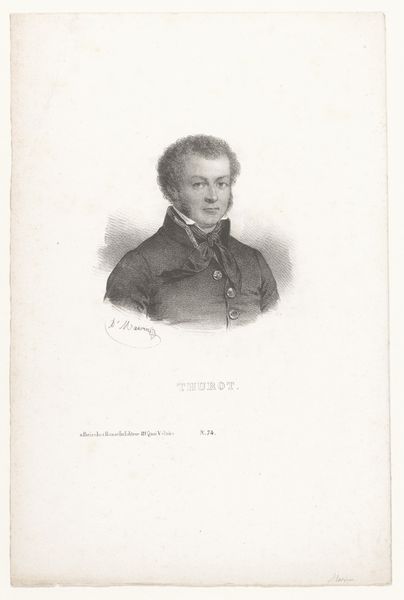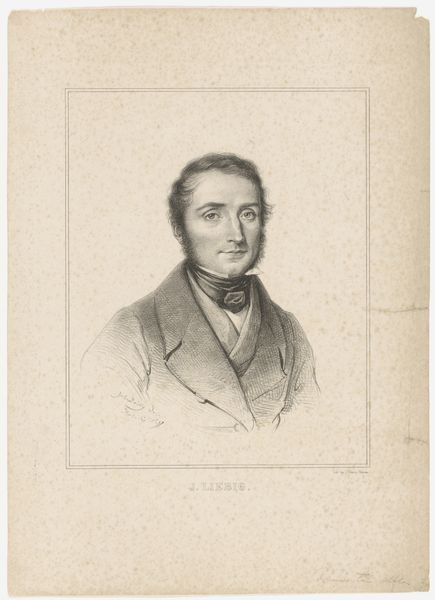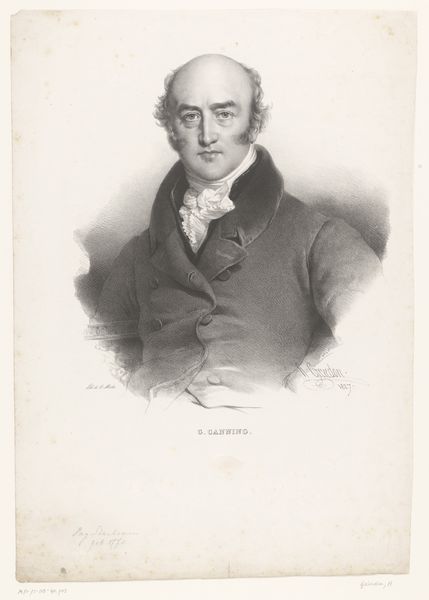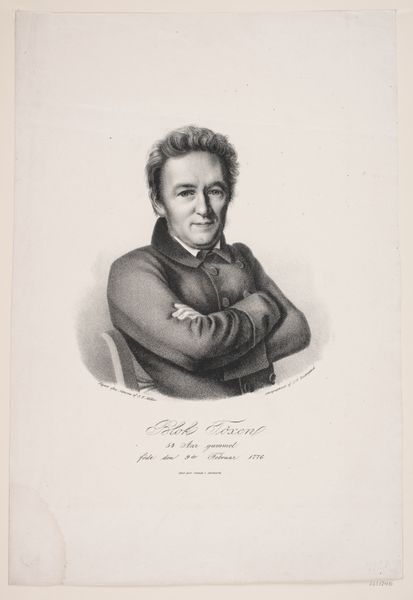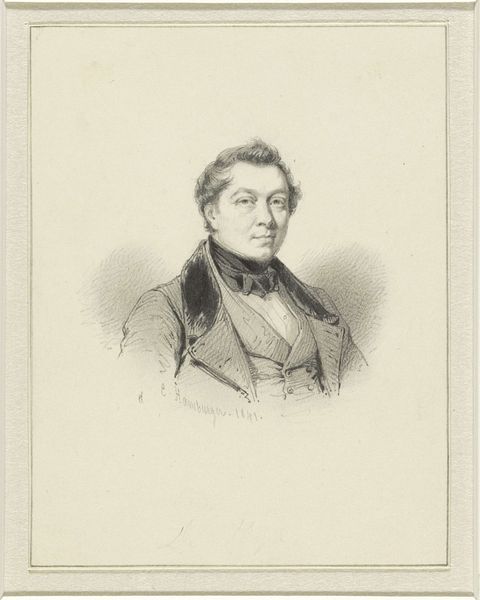
drawing, lithograph, print, etching, paper
#
portrait
#
drawing
#
neoclacissism
#
lithograph
# print
#
etching
#
paper
Dimensions: 151 × 165 mm (image); 342 × 259 mm (sheet)
Copyright: Public Domain
Curator: Jules Boilly created this piece around 1825. It’s titled "Portrait of Pierre-Louis Dulong" and the medium looks like etching and lithography on paper. You can find this print residing here at the Art Institute of Chicago. Editor: It's striking! The crispness of the line work gives the portrait a formal but also vulnerable quality. Dulong's eyes look like they are peering directly at the viewer, drawing one into his presence. Curator: The context is fascinating; the French Restoration was well underway, attempting to regain stability after the Napoleonic era. This portrait embodies some key Neoclassical ideals, doesn't it? The focus on clarity, order, and a kind of rational idealization of the sitter. Editor: I can see that. The neat coat, the precise etching—it speaks to that desire for order, a visual representation of the restored societal structure perhaps? Still, I feel there's an interesting tension. It is supposed to be an idealized image of the French scientist Pierre-Louis Dulong, but Boilly does not refrain from showing aging or what might have been perceived as imperfections. It’s also hard to separate portraiture of the time from ideas of patriarchy and privilege that continue to have significance. Curator: Yes, exactly! And we should also mention the "Institut Royal de France," which appears on the lithograph and denotes Pierre-Louis Dulong’s standing at the time. Remember this institute experienced suppression and reinstatement following the fall of Napoleon, as the names “Royal” or “National” reflected whoever was in power at the time. Dulong himself continued to have close ties to its physics department later in his career. The fine lettering here speaks to a society emphasizing achievements in science and culture, carefully rebuilding national prestige. Editor: It definitely makes you think about how images, even those that seem straightforward, are so embedded in political and social projects. This etching captures an individual, sure, but it is also reflective of larger themes surrounding authority, scientific knowledge, and, as you said, a nation's reconstructed identity. In fact, images of intellectuals played a crucial role in constructing a certain image of post-revolutionary France and helped legitimize this moment as a period of enlightenment and order. Curator: I think examining the piece through both an art historical and an activist lens enriches our understanding considerably. It goes to show you, the politics of image making, reproduction and display can be quite revealing when applied to artworks such as the "Portrait of Pierre-Louis Dulong.” Editor: Absolutely, it provides a rich tapestry of interpretation, doesn’t it? One where individual accomplishment intertwines with the wider societal aims of representation and authority.
Comments
No comments
Be the first to comment and join the conversation on the ultimate creative platform.
